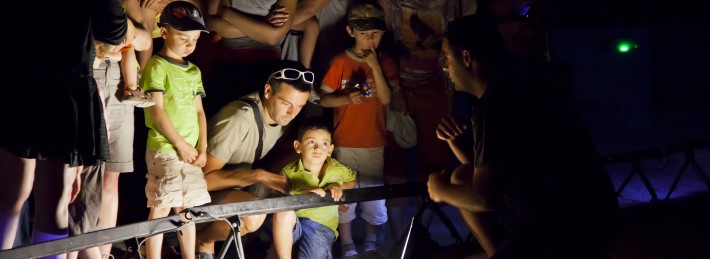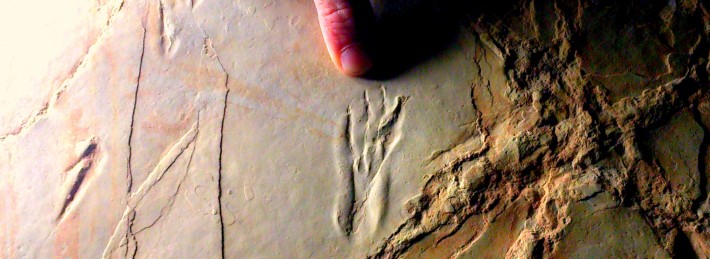Pterosaur beach
Practical
Visits of the Pterosaur Beach are only in french for now.
Ten minutes from Cahors, on the heights of the Lot valley, the village of Crayssac has the distinction of having one of the most unusual beaches in the world... Sand-free and with no sea in sight, the Plage aux Ptérosaures® is a unique palaeontological experience.
Jurassic foodprints
At Pterosaur Beach you won't see any bones, but footprints abound. In the Jurassic era, shellfish, crocodiles, turtles, pterosaurs and dinosaurs left their mark on the ground where they walked - a lagoon bathed in sunlight. Each track or mark was made in a couple of moments by a creature that lived there 150 million years ago: a pterosaur in the rain, another landing, a dinosaur that turned around on his heel... This lively approach allows visitors to engage in a real Jurassic exploration.
A unique site of global significance
The abundance, diversity and quality of the tracks and prints give this site a unique character in Europe. Tracks discovered on the site of Pterosaur Beach have helped scientists explain how pterosaurs moved. Pterosaurs were quadrupeds and not bipeds as the scientific community had thought before the discovery of the footprints in the Crayssac deposit. Having become a global scientific reference for the understanding of pterosaurs and other prehistoric reptiles, this site allows us to understand palaeontology in an original and dynamic way while providing scientists around the world with vital about ichnological data (that's the science footprints and tracks!) for pterosaurs, dinosaurs, crocodiles, turtles, lizards and even small crustaceans.



